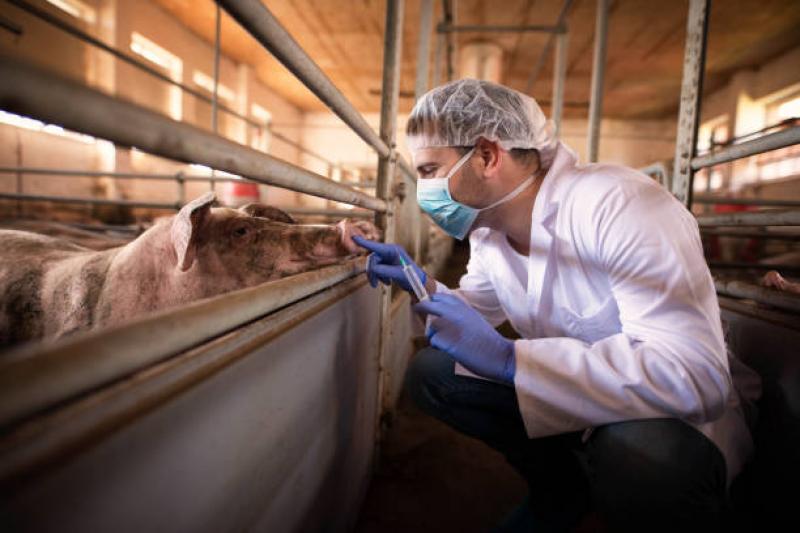Swine Disease Threat and the Need for Effective Prevention
Swine diseases pose a constant threat to pig farms worldwide. Pathogens like Porcine Reproductive and Respiratory Syndrome (PRRS) virus, porcine circovirus type 2 (PCV2), swine influenza virus and Mycoplasma hyopneumoniae can cause severe respiratory disease and reproductive failure in pigs. Left unchecked, outbreaks of these diseases can decimate entire herds, resulting in huge financial losses for farmers through increased mortality rates and reduced growth performance. Effective vaccination plays a crucial role in swine disease prevention and control.
The Economic Impact of Swine Disease
Losses from swine disease epidemics run into millions of dollars every year. A 2018 PRRS outbreak in the Midwest US caused estimated losses of over $664 million to pig farmers. Mycoplasma infections that impair lung function have been linked to annual production losses of over $130 million industry-wide. Even endemic pathogens like PCV2 that cause subclinical infection can significantly impact productivity. A survey across several EU countries found that PCV2 infection reduced average daily weight gain by 24g per pig, translating to losses of €4-10 per pig at market value. With the global pork industry worth over $176 billion, even minor reductions in pig performance pose a major economic threat. Vaccination helps plug this drain on farm revenues by controlling prevalence of costly swine diseases.
Effective Vaccine Options for Key Pathogens
To shield pig herds, vaccines targeting the major swine pathogens are available. For PRRS, modified live and inactivated virus vaccines provide protection against virulent field strains. Their ability to elicit both humoral and cellular immunity make them effective for outbreak control and stabilising endemic herds. For PCV2, vaccines containing virus-like particles of the capside protein induce high antibody levels and reduce infection rates. Inactivated and live attenuated vaccines for Mycoplasma are commercially available as well. Their administration several weeks before market boosts weight gain and lung performance. Influenza vaccines containing inactivated virus help prevent production losses during periods of high viral circulation. Such disease-specific vaccines play a key role in integrated farm management programs focused on optimising pig health and profitability.
Vaccination Logistics and Administration Protocols
The logistics and protocols for administering swine vaccines are an important consideration. Vaccines are typically delivered to farms in multi-dose vials to vaccinate groups of pigs. Some are applied using automatic jet injectors for speed and accuracy. Intramuscular injections into the neck region are most common. Proper storage as per manufacturer guidelines until use is also crucial for maintaining potency.
Farmers must carefully plan their vaccination schedules based on the production flow. For example, PRRS vaccines are often given to gilts upon entry to gilt development units to prime their immune systems before breeding. At farrowing, sows may receive erysipelas or parvovirus vaccines. Weaning piglets at 3 weeks are vaccinated for a range of pathogens including PCV2, Mycoplasma and influenza. Booster shots 2-4 weeks later reinforce immunity. Strict compliance to schedules ensures pig cohorts are optimally covered at vulnerable periods. Proper injection technique and hygiene during administration also prevents disease spread. With precise implementation, vaccination supports healthy herds even in the face of endemic disease pressure.
Benefits of Newer Vaccine Technologies
Recent advances in vaccine design and delivery further bolster swine disease defense. Marker vaccines allow easy distinction between vaccinated and infected pigs using simple lab tests. Researchers are developing intranasal formulations for swine influenza and other respiratory viruses that mimic natural infection routes. Such products avoid injection stress while inducing robust mucosal immunity.
Novel adjuvants are also enhancing vaccine performance. For instance, a PRRS vaccine containing a TLR9 agonist adjuvant stimulates stronger cellular immunity and longer-lasting protective antibodies. Biobanks of global PRRS virus strains facilitate rapid updates to circulating strains in vaccination programs. Even experimental DNA vaccines show promise, with one PRRS candidate reducing viremia better than conventional modified live vaccines after challenge.
Overall, these cutting-edge solutions expand the vaccine toolkit available to farmers. They help drive pigs to market faster at reduced disease risk, boosting the returns on swine operations for years to come. With science continuously advancing prevention strategies, vaccination will remain pig producers’ most powerful tool for overall herd health optimization. _____________________________________________________________________
